Changing the battery pack on the Avante 2011
First, a full view of the car in “off the shelf” or “after run” condition:
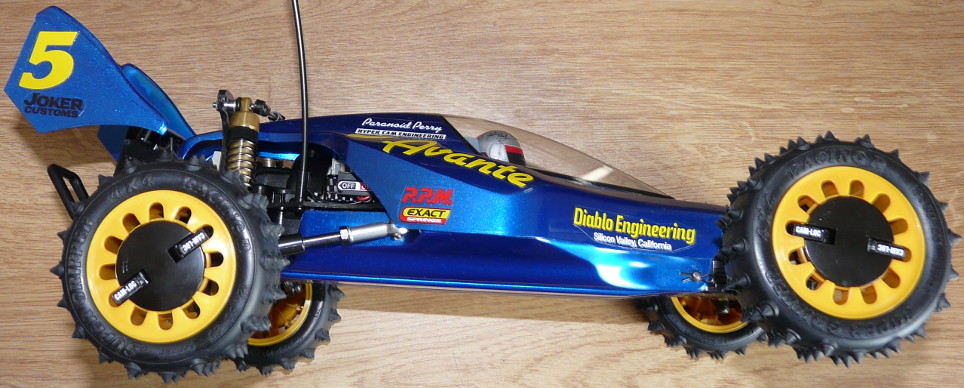
First operation, remove the rear snap pin of the chassis undercowl. This won't suffice yet because you can only access the lower part of the battery tray, the upper part is still covered by the bodyshell.
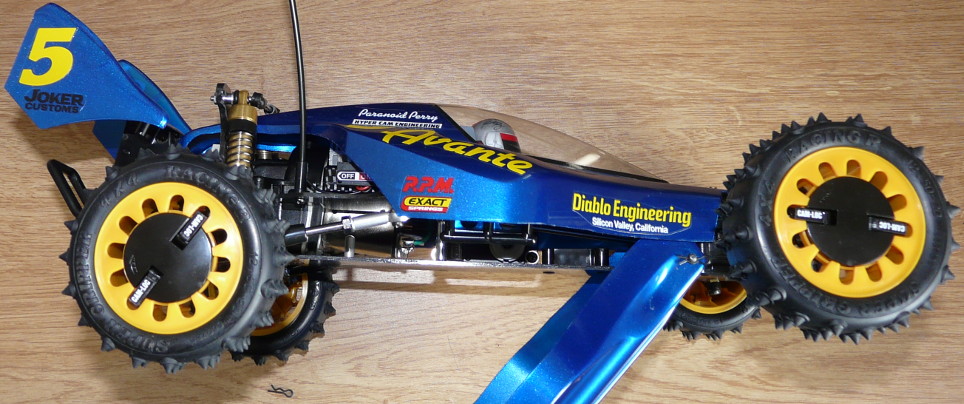
Next, remove the upper front and rear damper mounts links. I pointed them with red arrows on the next photo, the green dashed line showing their initial position.
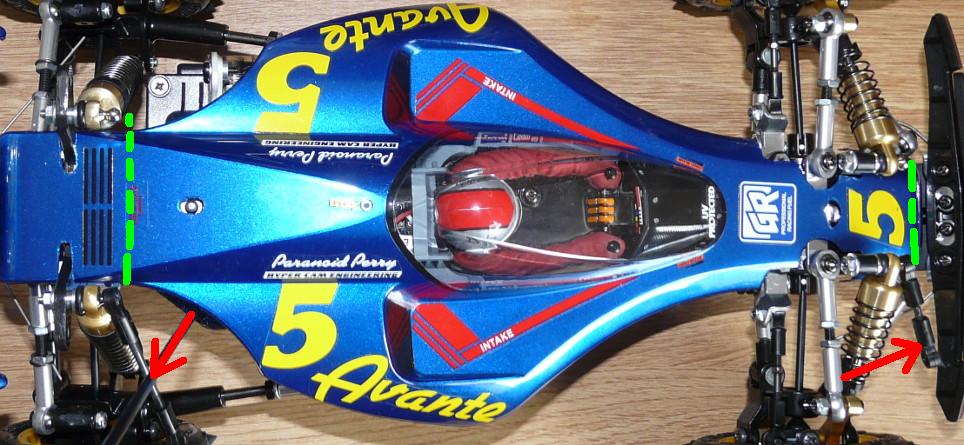
Here we are: the Avante unveils the inner chassis. You can now access the battery pack, but you still need to remove the battery tray door.
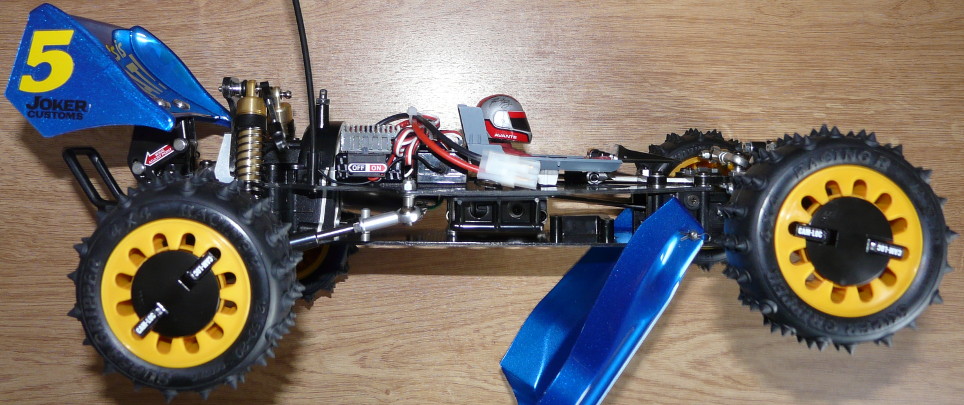
Now that you performed the required operations, you may replace or remove the battery pack on the Avante ![]() .
.
In addition, the battery tray is pretty narrow: high capacity nimh battery packs (>4000mah) may be hard to fit. As for LiPo batteries, square-shape hardcase packs do not fit (the location of the plugs on these battery packs wouldn't fit under the upper deck anyway). However, LiPo battery packs in stick format fit like a charm, as long as they are 138mm long maximum (not the most common).
You may read the RC Tech Guide: Batteries & Plugs for a list of compatible LiPo battery packs.
First runs with the Avante 2011
The first time I brought the Avante at the track was quite a moment, immediately followed by another great moment when I had the opportunity to drive this icon of RC.
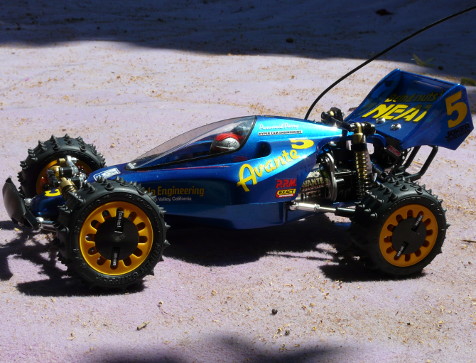
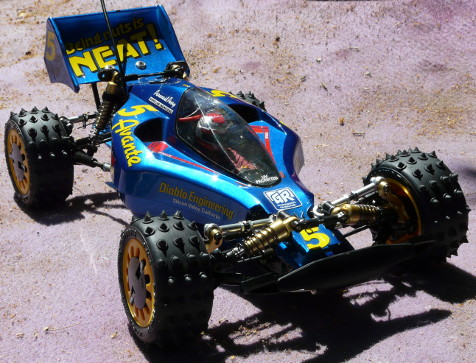
Photos can't describe the feeling when you see the Avante on the track. First is the overall weight of the model when you carry it to the track: it doesn't look massive, but it is heavy. And then comes the second feeling: the Avante looks very aerodynamic and light. This elegance is very rare, if not unique in the RC world, offering the model a striking and unmistakeable appearance. Here are more photos to depict this:
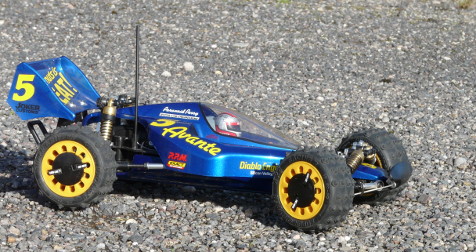
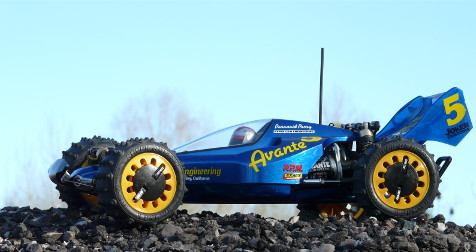
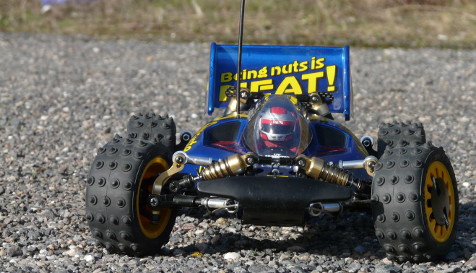
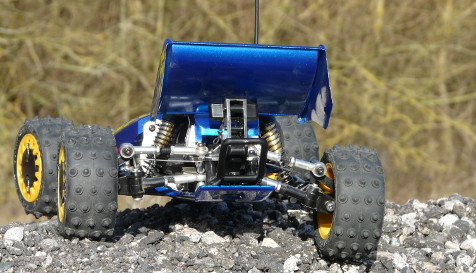
The Avante looks both absolutely fabulous and very different from any other buggy of the time. To my knowledge, apart from the Avante and its direct successors, no other RC buggy has ever been so different from the rest of the competition up to now (except the Tenth Technology Predator X10 perhaps).
On the track, driving the Avante is a great moment and I found the overall handling to be very close to high-end modern buggies: suspension is very smooth and efficient, the chassis is very well balanced and steering is precise. Primarily, the Avante differs from high-end modern racers on two aspects: the weight and the suspension. Whether it is the chassis response to motor power or the chassis overall liveliness on the track, the Avante handles in a smooth flowing style, the opposite definition of “nervous”. And because of the almost horizontal dampers, the front drivetrain suspension travel is very limited compared to modern machines. However, one can't miss some lineage with the famous monoshock suspension Tamiya was using at the time on buggies like the Boomerang and Thundershot.
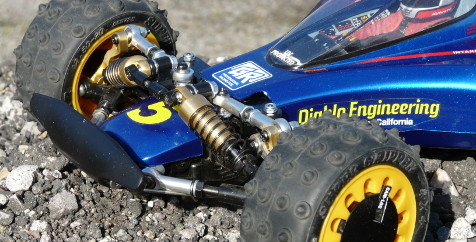
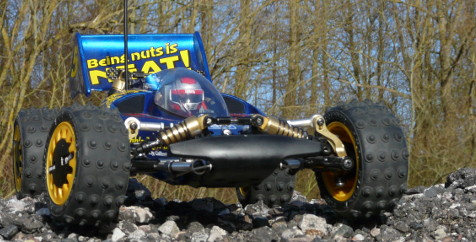
One word about the motor: the “Special Avante” 25T GT-Tuned is brave, better than a stock Mabuchi 540 silver can of course, but overall, it is a Sport Tuned motor with a bit more torque. Anyway, it nicely suits the Avante, providing enough top speed and torque to enjoy driving the buggy at the track. The Avante was designed as the top end racer of its time, but results never got even close to matching the sum of hopes and efforts dedicated to the making of the model. So today, 25 years later, you can not change History and pretend racing the Avante with modern machines: I think using more powerful motors would only lead to quicker wear. If you want to go brushless, a 15.5T sensored motor with “soft” timing and punch would probably make the chassis more dynamic: more than enough to enjoy driving the Avante.




